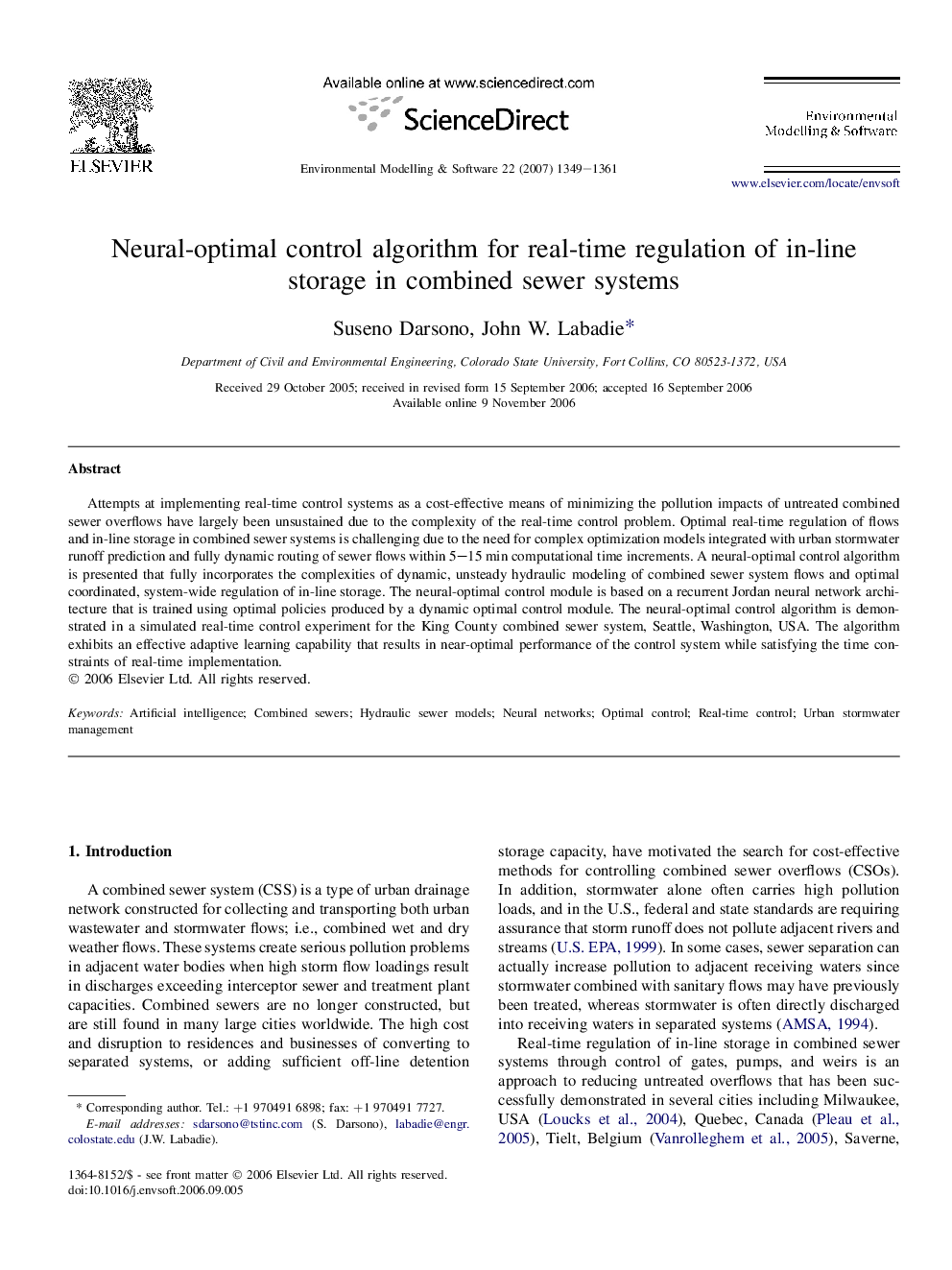| Article ID | Journal | Published Year | Pages | File Type |
|---|---|---|---|---|
| 569389 | Environmental Modelling & Software | 2007 | 13 Pages |
Attempts at implementing real-time control systems as a cost-effective means of minimizing the pollution impacts of untreated combined sewer overflows have largely been unsustained due to the complexity of the real-time control problem. Optimal real-time regulation of flows and in-line storage in combined sewer systems is challenging due to the need for complex optimization models integrated with urban stormwater runoff prediction and fully dynamic routing of sewer flows within 5–15 min computational time increments. A neural-optimal control algorithm is presented that fully incorporates the complexities of dynamic, unsteady hydraulic modeling of combined sewer system flows and optimal coordinated, system-wide regulation of in-line storage. The neural-optimal control module is based on a recurrent Jordan neural network architecture that is trained using optimal policies produced by a dynamic optimal control module. The neural-optimal control algorithm is demonstrated in a simulated real-time control experiment for the King County combined sewer system, Seattle, Washington, USA. The algorithm exhibits an effective adaptive learning capability that results in near-optimal performance of the control system while satisfying the time constraints of real-time implementation.
